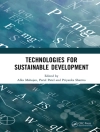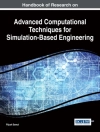This widely acclaimed text covers the whole field of modern food microbiology. Now in its second edition, it has been revised and updated throughout and includes new sections on stress response, Mycobacterium spp., risk analysis and new foodborne health problems such as BSE. Food Microbiology covers the three main aspects of interaction between micro-organisms and food – spoilage, foodborne illness and fermentation – and the positive and negative features that result. It discusses the factors affecting the presence of micro-organisms in food and their capacity to survive and grow. Also included are recent developments in procedures used to assay and control the microbiological quality of food. Food Microbiology presents a thorough and accessible account of this increasingly topical subject, and is an ideal text for undergraduate courses in the biological sciences, biotechnology and food science. It will also be valuable as a reference for lecturers and researchers in these areas.
Daftar Isi
Chapter 1: The Scope of Food Microbiology; 1.1: Micro-organisms and Food; 1.1.1: Food Spoilage/Preservation; 1.1.2: Food Safety; 1.1.3: Fermentation; 1.2: Microbiological Quality Assurance; Chapter 2: Chapter 2: Micro-organisms and Food Materials; 2.1: Diversity of Habitat; 2.2: Micro-organisms in the Atmosphere; 2.2.1: Airborne Bacteria; 2.2.2:Airborne Fungi; 2.3: Micro-organisms of Soil; 2.4: Micro-organisms of Water; 2.5: Micro-organisms of Plants; 2.6: Micro-organisms of Animal Origin; 2.6.1: The Skin; 2.6.2: The Nose and Throat; 2.7: Conclusions; Chapter 3: Factors Affecting the Growth and Survival of Micro-organisms in Foods; 3.1: Microbial Growth Intrinsic Factors (Substrate Limitations); 3.2.1: Nutrient Content; 3.2.2: p H and Buffering Capacity; 3.2.3: Redox Potential, Eh; 3.2.4: Antimicrobial Barriers and Constituents; 3.2.5: Water Activity; 3.3: Extrinsic Factors (Environmental Limitations); 3.3.1: Relative Humidity; 3.3.2: Temperature; 3.3.3: Gaseous Atmosphere; 3.4: Implicit Factors;3.5: Predictive Food Microbiology; Chapter 4: The Microbiology of Food Preservation; 4.1: Heat Processing; 4.1.1 Pasteurization and Appertization; 4.1.2: Qauntifying the Thermal Death of Micro-organisms: D and z values; 4.1.3: Heat Sensitivity of Micro-organisms; 4.1.4: Describing a Heat Process; 4.1.5: Spoilage of Canned Foods; 4.1.6 Aseptic Packaging; 4.2: Irradiation; 4.2.1: Microwave Radiation; 4.2.2: UV Radiation; 4.2.3: Ionizing Radiation; 4.3: High-pressure Processing -Pascalization; 4.4: Low-temperature Storage -Chilling and Freezing; 4.4.1: Chill Storage; 4.4.2: Freezing; 4.5: Chemical Preservatives; 4.5.1: Organic Acids and Esters; 4.5.2: Nitrite; 4.5.3: Sulfur Dioxide; 4.5.4:’Natural’ Food Preservatives; 4.6: Modification of Atmosphere; 4.7: Control of Water Activity; 4.8: Compartmentalization; Chapter 5: Microbiology of Primary Food Commodities; 5.1: What is Spoilage?; 5.2: Milk; 5.2.1: Composition; 5.2.2: Microflora of Raw Milk; 5.2.3: Heat Treatment for Milk; 5.2.4: Milk Product; 5.3: Meat; 5.3.1: Structure and Composition; 5.3.2: The Microbiology of Primary Processing; 5.3.3: Spoilage of Fresh Meat; 5.4: Fish; 5.4.1: Structure and Composition; 5.4.2: The Microbiology of Primary Processing; 5.3.3; Spoilage of Fresh Fish; 5.5: Plant Products; 5.5.1: Cereals; 5.5.2: Preservation of High-moisture Cereals; 5.5.3: Pulses, Nuts, and Oilseeds; 5.5.4: Fruits and Fruit Products; 5.5.5: Vegetables and Vegetable Products; Chapter 6: Food Microbiology and Public Health; 6.1: Food Hazards; 6.2: Significance of Foodborne Disease; 6.3: Incidence of Foodborne Illness; 6.4: Risk Factors Associated with Foodborne Illness; 6.5: The Site of Foodborne Illness. The Alimentary Tract: Its Function and Microflora; 6.6: The Pathogenesis of Diarrhoeal Disease; Chapter 7: Bacterial Agents of Foodborne Illness; 7.1: Aeromonas hydrophila; 7.1.1: Introduction; 7.1.2: The Organism and its Characteristics; 7.1.3: Pathogenesis and Clinical Features; 7.1.4: Isolation and Identification; 7.1.5: Association with Foods; 7.2: Bacillus cereus and Other Bacillus Species; 7.2.1: Introduction; 7.2.2: The Organism and its Characteristics; 7.2.3: Pathogenesis and Clinical Features: 7.2.4: Isolation and Identification; 7.2.5: Association with Foods; 7.3: Brucella; 7.3.1: Introduction; 7.3.2: The Organism and its Characteristics; 7.3.3:Pathogenesis and Clinical Features; 7.3.4:áIsolation and Identification; 7.3.5: Association with Foods; 7.4: Campylobacter; 7.4.1: Introduction; 7.4.2: The Organism and its Characteristics; 7.4.3: Pathogenesis and Clinical Features; 7.4.4: Isolation and Identification; 7.4.5: Association with Foods; 7.5: Clostridium botulinum; 7.5.1: Introduction; 7.5.2: The Organism and its Characteristics; 7.5.3: Pathogenesis and Clinical Features; 7.5.4: Isolation and Idnetification; 7.5.5: Association with Foods; 7.6: Clostridium perfringens; 7.6.1: Introduction; 7.6.2: The Organism and its Characteristics; 7.6.3: Pathogenesis and Clinical Features; 7.6.4: Isolation and Identification; 7.6.5: Association and Foods; 7.7: Escherichia coli; 7.7.1: Introduction; 7.7.2: The Organism and its Characteristics; 7.7.3: Pathogenesis and Clinical Features; 7.7.3.1: Enterotoxigenic E. coli (ETEC); 7.7.3.2: Enteroinvasive E. coli (EIEC); 7.7.3.3: Enteropathogenic E. coli (EPEC); 7.7.3.4: Enterohaemorrhagic E. coli (EHEC); 7.7.4: Isolation and Identification; 7.7.5: Asscociation with Foods; 7.8: Listeria monocytogenes; 7.8.1: Introduction; 7.8.2: The Organism and its Characteristics; 7.8.3: Pathogenesis and Clinical Features; 7.8.4: Isolation and Identification; 7.8.5: Asscoiation with Foods; 7.9: Mycobacterium Species; 7.9.1: Introduction; 7.9.2: The Organism and its Characteristics; 7.9.3: Pathogenesis and Clinical Features; 7.9.4: Isolation and Identification; 7.9.5: Assocation with Foods; 7.11: Salmonella; 7.11.1: Introduction; 7.11.2: Pathogenesis and Clinical Features; 7.11.3.1: Enteritis; 7.11.3.2: Systemic Disease; 7.11.4: Isolation and Identification; 7.11.5: Asscoiation with Foods; 7.12: Shigella; 7.12.1 Introduction; 7.12.2; The Organism and its Characteristics; 7.12.3: Pathogenesis and Clinical Features; 7.12.4: Isolation and Identification; 7.12.5: Association with Foods; 7.13: Staphylococcus aureus; 7.13.1: The Organisms and the Characteristics; 7.13.3: Pathogenesis and Clinical Features; 7.13.4: Isolation and Identification; 7.13.5: Asscoiation with Foods; 7.14: Vibrio: 7.14.1: Introduction; 7.14.2: The Organisms and the Characteristics; 7.14.3: Pathogenesis and Clinical Features; 7.14.4: Isolation and identification; l7.14.5: Assciation with Foods; 7.15: Yersinia enterocolitica; 7.15.1: Introduction; 7.15.2: The Organism and its Characteristics; 7.15.3: Pathogenesis and Clinical Features; 7.15.4: Isolation and Identification; 7.15.5: Association with Foodsl 7.16: Scombrotoxic Fish Poisoning; 7.17: Conclusion; Chapter 8: Non-bacterial Agents of Foodborne Illness; 8.1: Helminths and Nematodes; 8.1.1: Platythelminths: Liver Flukes and Tapeworms; 8.1.2: Roundworms; 8.2: Protozoa; 8.2.1: Giardia lamblia; 8.2.2: Entamoeba histolytica; 8.2.3: Sporozoid Protozoa; 8.3: Toxigenic Algae; 8.3.1: Dinoflagellate Toxins; 8.3.2: Cyanobacterial Toxins; 8.3.3: Toxic Diatoms; 8.4: Toxigenic Fungi; 8.4.1: Mycotoxins and Mycophagy; 8.4.2: Mycotoxins of Aspergillus; 8.4.2.1: The Aflatoxins; 8.4.2.2: The Ochratoxins; 8.4.3: Mycotoxins of Penicillium; 8.4.3.1: Yellow Rice Disease; 8.4.4: Mycotoxins of Fusartium; 8.4.4.1; Alimentary Toxic Aleukia; 8.4.4.2: DON and Other Trichothecenes; 8.4.4.3; Zearalenone; 8.4.4.4; Oesophageal Cancer; 8.4.5: Mycotoxins of Other Fungi; 8.5: Foodborne Viruses; 8.5.1: Polio; 8.5.2: Heptatis A and E; 8.5.3: Gastroenteritis Viruses; 8.5.4: Sources of Food Contamination; 8.5.5: Control; 8.6: Spongiform Encephalophathies; Chapter9: Fermentation and Microbial Foods; 9.1: Introduction; 9.2 Yeasts; 9.3: Lactic Acid Bacteria; 9.4: Activities of Lactic Acid Bacteria in Foods; 9.4.1: Antimicrobial Activity of Lactic Acid Bacteria; 9.4.2: Health-promoting Effects of Lactic Acid Bacteria; 9.4.3: The Malo-lactic Fermentation; 9.5: Fermented Milks; 9.5.1: Yoghurt; 9.5.2: Other Fermented Milks; 9.6: Cheese: 9.7: Fermented Vegetables; 9.7.1: Sauerkraut and Kimchi; 9.7.2: Olives; 9.7.3: Cucumbers; 9.8: Fermented Meats; 9.9: Fermented Fish; 9.10; Beer; 9.11: Vinegar; 9.12: Mould Fermentations; 9.12.1: Tempeh; 9.12.2: Soy Sauce and Rice Wine; 9.12.3: Mycoprotein; 9.13: Conclusion; Chapter 10: Methods for the Microbiological Examination of Foods; 10.1: Indicator Organisms; 10.2: Direct Examination; 10.3: Cultural Techniques; 10.4: Enumeration Methods: 10.4.1: Plate Counts; 10.4.2: Most Probable Number Counts; 10.5: Alternative Methods; 10.5.1; Dye-reduction Tests; 10.5.2: Electrical Methods; 10.5.3: ATP Determination; 10.6: Rapid Methods for the Detection of Specific Organisms and Toxins; 10.6.1: Immunological Methods; 10.6.2: DNA/RNA Methodology; 10.7: Laboratory Accreditation; Chapter 11: Controlling the Microbiological Quality of Foods; 11.1: Quality and Criteria; 11.2: Sampling Schemes; 11.2.1: Two-class Attributes Plans; 11.2.2: Three-class Attributes Plans; 11.2.3: Choosing a Plan Stringency; 11.2.4: Variable Acceptance Sampling; 11.3: Quality Control Using Microbiological Criteria; 11.4: Control at Source; 11.4.1: Training; 11.4.2: Facilities and Operations; 11.4.3: Equipment; 11.4.4: Cleaning and Disinfection; 11.5: Codes and Good Manufacturing Practice; 11.6: The Hazard Analysis and Critical Control Point (HACCP) Concept; 11.6.1: Hazard Analysis; 11.6.2: Identification of Critical Control Points (CCPs); 11.6.3: Establisment of CCP Critical Limits; 11.6.4: Monitoring Procedures for CCPs; 11.6.5: Protocols for CCP Deviations; 11.6.6: Verification; 11.6.7: Record Keeping; 11.7: Quality Systems:BS5750and ISO 9000Series; 11.8: Risk Analysis; Chapter 12: Further Reading; Subject Index












